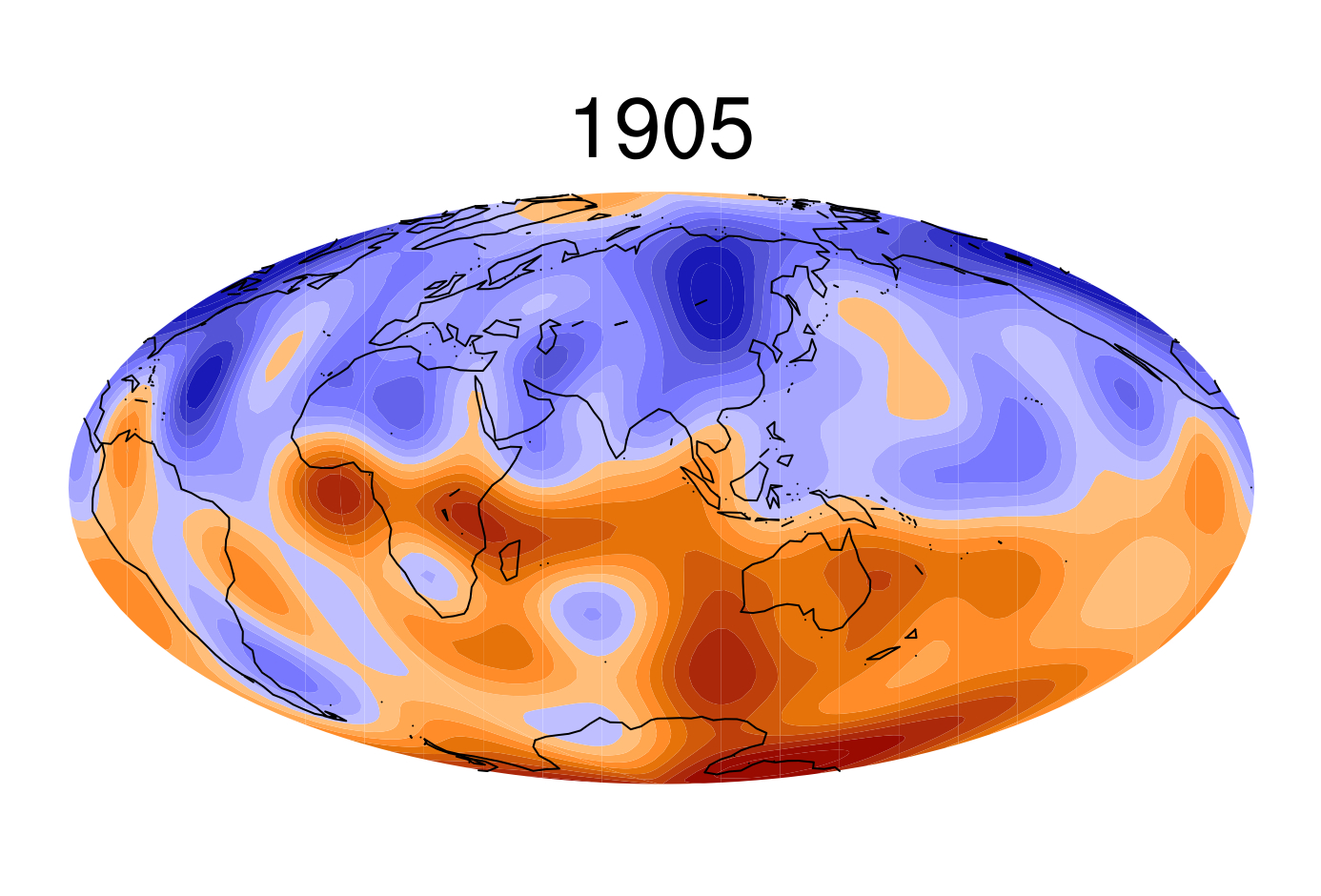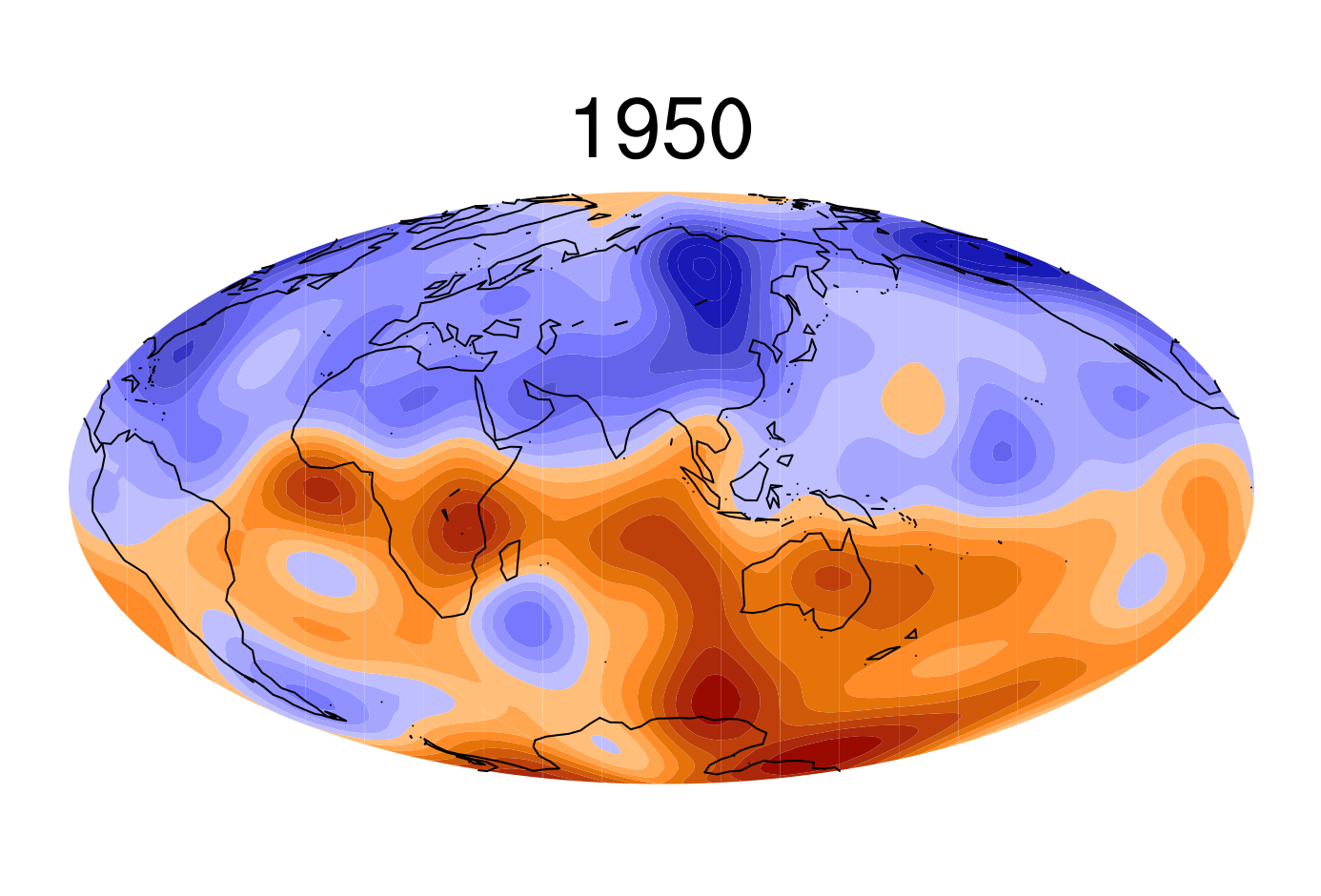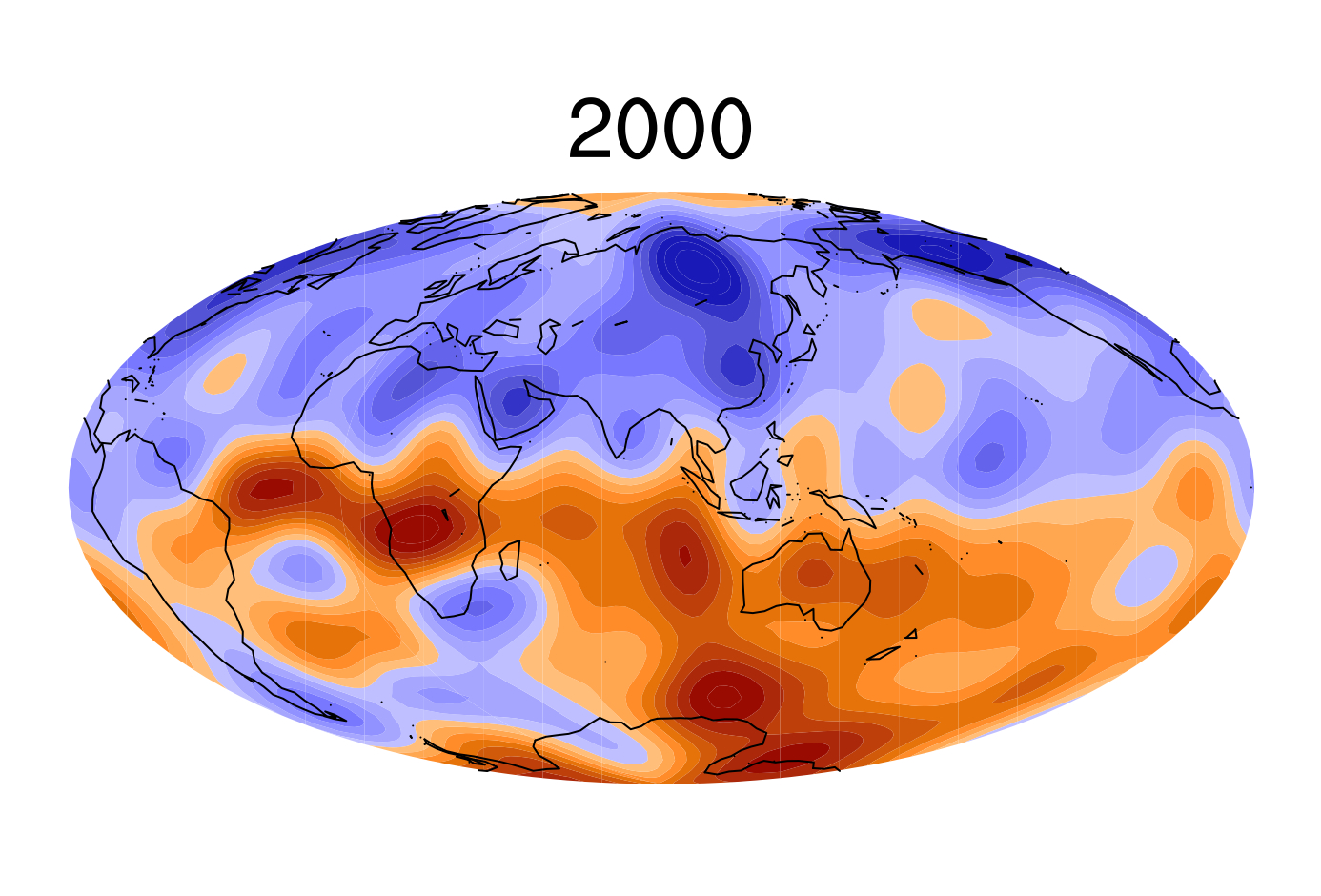Geomagnetic secular variation
The geomagnetic secular variation is a somewhat misleading terminology
that refers to the observed temporal changes of the Earth's main magnetic
field originating in its core. The timescale implied by "secular" variation is anywhere between a month to a few hundred years, so this does not include the
very fast changes due to external influences (from the solar wind) nor
reversals of the dipole part of the field (which take a few thousand
years to complete, though the time interval between reversals is of
the order of a few 100 thousand years).
The time-changes of the magnetic field at the surface of the core are shown in the images below. Red (Blue) corresponds to magnetic field lines coming into
(out of) the core. This is not actual data, but a model which
represents a best fit in a least square sense to a collection of
data
from surface observatories, ship logs and other sources. Note how
some features are drifting westward in the equatorial region of the
Atlantic hemisphere: this is responsible for the westward drift
observed at the surface and that has been noticed by Halley 300 years
ago. In contrast, there appears to be no systematic drift in the
Pacific hemisphere. The increase in complexity of the field in later
epochs is an artifact of the greater and more accurate data that enters
the model. The cause of the secular variation is from flow in
the Earth's core, though diffusion of the magnetic field also plays a
role. The dynamics governing core flows and the resulting secular
variation is an underlying
theme of my research.



Figure 1: Snapshots of the radial magnetic field at the core-mantle boundary in 1905, 1950 and 2000. Red (Blue) represents magnetic field lines coming out of (into) the core. Note how the flux patch just under the western tip of Africa in 1905 has drifted westward to the mid-Atlantic by 2000.
Recent review paper on this topic
Finlay, C.C., Dumberry, M., Chulliat, A. and Pais, A., 2010, Short timescale core dynamics: theory and observations, Space Sci. Rev., 155, 177-218.

